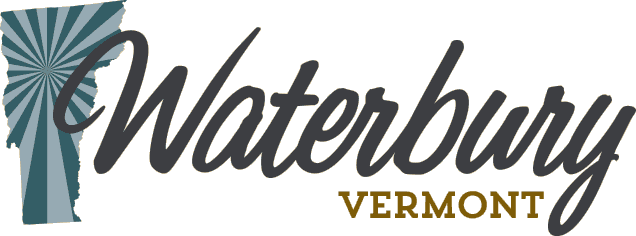Waterbury History
Since its charter in 1763, Waterbury's history has been chronicled, celebrated, and remembered. The Waterbury Historical Society maintains the community's historical archives and has published books and materials about Waterbury, its many notable residents, significant events, architectural structures and rich community. See the Waterbury Historical Society's web site for more information about the organization. Click here to see Historical tours of Waterbury you can take on foot or by bike. Read on for a brief history of Waterbury.
Historical Introduction to Waterbury
Before the arrival of the explorers and white settlers, Native Americans passed through and settled in parts of what is now Waterbury. The area's abundant supply of water, timber and soil provided ample food and shelter, which eventually attracted other settlers as well. In 1763, King George III of England granted a charter through Governor Benning Wentworth of New Hampshire for land in the Winooski River Valley. The subjects, mostly from Waterbury, Connecticut, received the charter and named the new township after their hometown. And in 1783, James Marsh became the first permanent settler.
Waterbury's early industries, located primarily along the Little River, Thatcher Brook, and Alder Brook, included lumber, baskets, children's carriages, leather products, starch, alcohol, and scythe handles. Agriculture was also a major industry. The early, self sufficient farms yielded gradually to commercial agriculture, which was characterized by the rise and fall of the "sheep mania" during the period 1830-1870 and the flowering of the dairy industry thereafter.
In 1849, the Central Vermont Railroad came to Waterbury. With it came economic growth and tourism. The railroad also contributed to the relocation of the center of local activity from Waterbury Center to Waterbury Village. The Village area continued to attract businesses and housing. By 1880, the population of Waterbury was over 2,200. Finally in 1882, the Village of Waterbury was incorporated. Although the Village has operated with its own government since then, the Town and Village work cooperatively in many areas.
Like many Vermont municipalities, Waterbury was hit hard by the 1927 flood. Several residents were killed and many buildings were damaged or destroyed. Waterbury, Connecticut residents sent $10,000 to help the Waterbury Public Library Association replace all of the books that were lost. In 1955, Waterbury residents sent $5,000 to Waterbury, Connecticut to help them rebuild a field house, which was destroyed in a fire. Following the flood's devastation, the Little River Dam was built in 1938 as a flood control project by the Army Corps of Engineers. The resulting Waterbury Reservoir was formed and became a resource for public recreation.
The Waterbury portion of Interstate 89 was opened in 1960, relieving traffic on Route 2, which runs through Waterbury Village. I-89 increased accessibility for Vermonters and out of state residents for business and recreation.
Waterbury Village has annexed land from Waterbury Town several times in recent years. Colbyville village, approximately 47 acres, was annexed by Waterbury Village in 1981. In 1984, the Village annexed approximately 11 acres of land along Route 100 in order to extend Village water and sewer lines to a light industrial site. In 1989, the Village annexed about 32 acres off of Town Highway 15 to extend sewer to a potential residential development.
In 2017, voters approved 224 to 83 to dissolve the Village of Waterbury as a municipality, completing their merger with the Town of Waterbury. The Village dissolved on June 30, 2018, more than 135 years after its 1882 incorporation by the Waterbury Fire District #1. The final annual report was dedicated to all the officials who served the Village of Waterbury.
